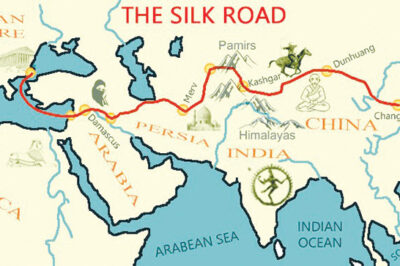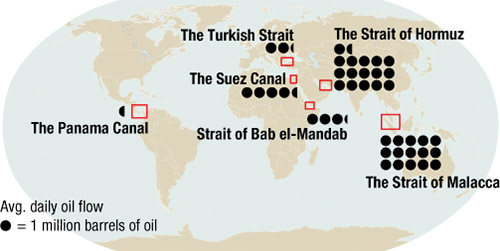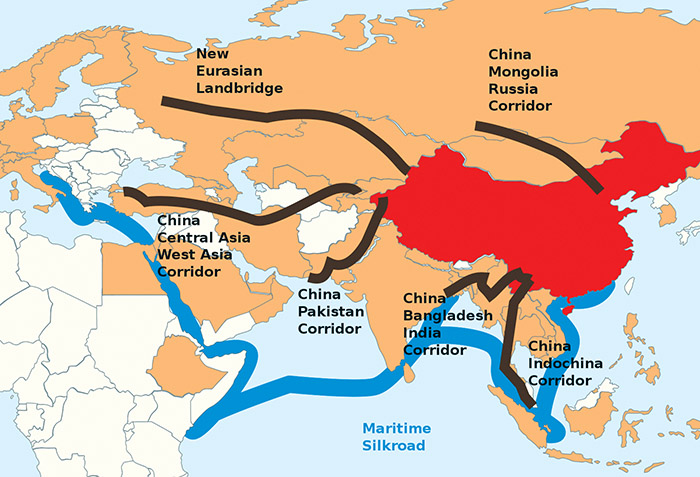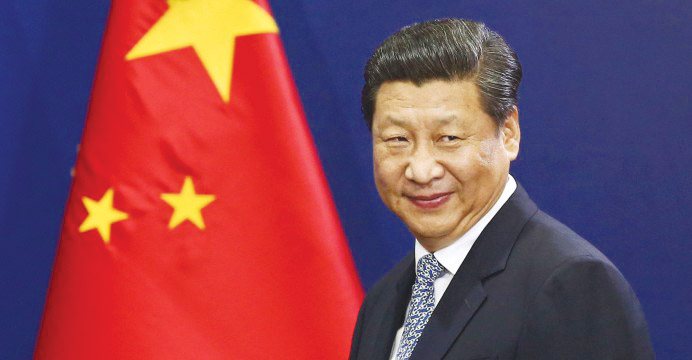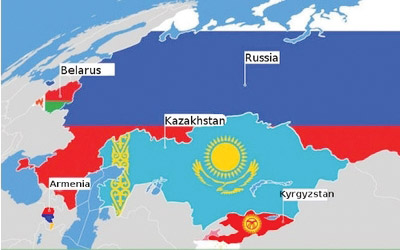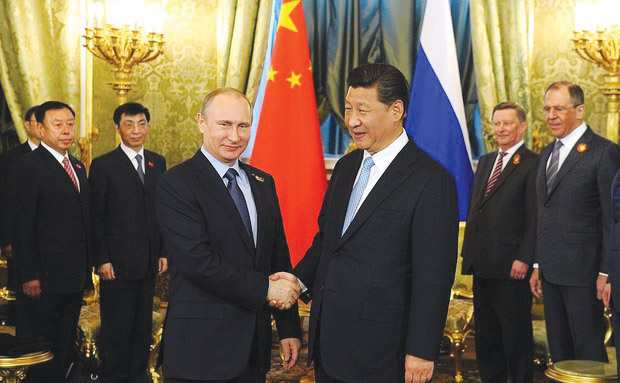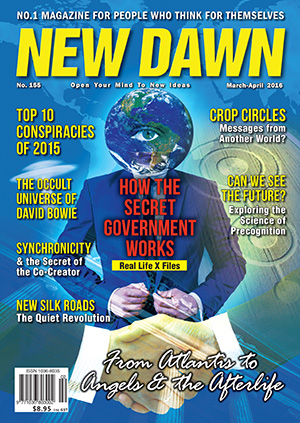From New Dawn 155 (Mar-Apr 2016)
The late Australian geopolitical analyst James O’Neill wrote this article for New Dawn 155, published in 2016. As you will read, James accurately analysed and foretold the events that are unfolding today.
In 1904 Sir Halford Mackinder gave a lecture to the Royal Geographical Society in London in which he set out a blueprint for change in the world’s geopolitical footprint. The centrepiece of Mackinder’s vision was the great land mass he called Euro-Asia, now better known as Eurasia.
The heartland of this great landmass, a “world island,” was an area stretching in Mackinder’s vision from the Persian Gulf to the Yangtze River. We would now see it as from Vladivostok to the Baltic. Who rules the heartland, Mackinder argued, rules the World Island. Who rules the World Island “rules the world.”
In Mackinder’s vision the less consequential hemispheres outside this controlling land mass included the United States and Australia. It might be argued that Mackinder underestimated the rise to dominance of the US in the hundred years following his address, but that dominance may be seen, in the broader sweep of history, as an aberration.
American power, so dominant in the latter half of the twentieth century, is fading, being replaced by the re-emergence of Eurasia as the centre of economic, financial and geopolitical power. The self-styled “exceptional nation” (the US) has a fundamental problem with accepting the reality of that shift.
One says re-emergence because the domination of the Western nations’ maritime, colonial and military power existed for a relatively brief period from the mid-16th to the latter 20th century.
American foreign policy post-World War II has sought to maintain control of the world’s resources by building a comprehensive system of military bases that now number between 800 and 1,000, depending on definition, around the world. When viewed on a world map, the European, Asian and Pacific network of bases may be seen as effectively an encirclement of the Eurasian landmass, especially aimed at “containing” any expansion of Chinese and Russian influence.
The military bases have been supplemented by a number of military alliances, of which the better-known ones are NATO, SEATO and ANZUS. Their common denominators are American control and the serving of American interests. Australians like to think of ANZUS as the bulwark of their defence network, but the treaty only requires the parties to “consult” in the event of an attack upon them. It is one of Australia’s more dangerous delusions.
Asymmetrical Warfare
More important than the military alliances, which are publicly portrayed as defensive in character, is the huge effort and resources devoted to asymmetrical warfare. This takes many forms. One form is the use of quasi-governmental organisations such as the US National Endowment for Democracy to finance and organise opposition groups with the aim of “regime change” to ensure a government in the target country that is amenable to American imperial interests. It is known that more than 70 countries since World War II have been subject to that kind of attention.
Another form this asymmetrical warfare takes is the staging of false flag attacks that can be blamed on (generally) left wing groups, thereby ensuring the retention of power of conservative pro-American governments. Operation Gladio is the best documented of this type of subversion.
A third favoured technique is the use of extremist proxy groups, of which the current incarnation is radical Islamists. That is not a new phenomenon, however, as its origins can be traced back at least to Operation Cyclone. That particular operation began in Pakistan in the 1980s where Muslim radicals (including the later infamous Osama bin Laden) were trained by the Americans to infiltrate and disrupt non-compliant governments.
An obvious target was the leftist nationalist government of Afghanistan, but in fact the intended targets for infiltration, subversion, sabotage, assassinations and general mayhem included Iran, the then Soviet republics to the north of Afghanistan, and the Muslim Chinese region of Xinjiang.
The CIA was the source of many of these policies. Finance for the operations, which had to be shielded from US congressional scrutiny, came largely from control of the production, distribution and sale of illegal narcotics.
As Peter Dale Scott, Alfred McCoy and others have documented, CIA control of the world’s narcotics trade can be traced to the South East Asia Golden Triangle, for which the American War in Vietnam provided so many lucrative opportunities, to Afghanistan’s heroin. The latter provided 93% of the world’s supply. The Taliban government had virtually eliminated that industry during their period in power in the 1990s. It was no coincidence that following the invasion and occupation of Afghanistan by the US and its allies including Australia, one of the earliest major changes was a reinstatement of the heroin industry. Bagram air base north of Kabul became the major departure point for heroin distribution. Camp Bond Steel in Kosovo, the largest American base in Europe, but almost completely absent from the pages of the Western press, functions inter alia as a major transit point for heroin into Europe.
Colombian cocaine performs a similar function for the American market. Daniel Hopsicker has brilliantly exposed the interconnections between Colombian cocaine, the CIA and American politicians at the highest levels of government.
The final component of this strategy was for the US Navy to control the world’s great maritime “choke points.” These are the narrow sea-lanes through which the great preponderance of the world’s maritime trade must pass.
There are seven such great choke points. In each of these there is either direct US control (e.g. the Panama Canal); a significant American military presence that either controls the choke point (Persian Gulf, Straits of Malacca, Straits of Hormuz); or has a significant military presence (air, sea and land based) in close proximity. The US 6th Fleet in the Mediterranean (Suez Canal) and the 7th Fleet in Bahrain supplement land bases also in close proximity.
Such unipolar dominance and actual or implied military threats is clearly intolerable to the other great powers of Eurasia – Russia and China. The pressure to respond has become increasingly acute in recent years as the US, through its NATO arm, has steadily moved further East in direct contradiction to assurances given to Russia at the end of the Cold War. The American organised coup d’état in Ukraine clearly crossed a red line as far as the Russians are concerned.
One Belt, One Road
The response of China and Russia to these endless provocations has taken many forms, which either individually or collectively, amount to a quiet revolution that is fundamentally reshaping the post World War II geopolitical structure. This revolution is being achieved without a single coup, invasion, acts of subversion or assassination of an unfriendly leader. Much less are there threats or sanctions. The revolution is predicated upon what Chinese President Xi Jinping likes to refer to as a “win-win” policy.
Xi first presented his vision of a One Belt, One Road policy in a speech to the Indonesian parliament in October 2013. Chinese attempts to reform existing financial and trade institutions were repeatedly stalled or rebuffed. US foreign policies, of the type noted above, showed no inclination to change. If China was not to be eventually trapped by the tightening US noose, a bold new initiative was required.
Since then, events regarding the New Silk Roads, as the policy is known in the West, have moved with dizzying speed. Scarcely a week passes without major new announcements, and any listing would rapidly become obsolete. The framework for Xi’s initiative was already in place as discussed below. The interested reader can readily ascertain details of the land and maritime routes that are incorporated in the plan.
The main focus here is to put the New Silk Roads into their geopolitical context, and then to examine the implications for the changing world order and the challenges it poses for countries such as Australia.
Chronologically, the first development was the creation of the Shanghai Cooperation Organisation (SCO) in 1996. There are currently six member nations: China, Kazakhstan, Kyrgyzstan, Russia, Tajikistan and Uzbekistan.
There are a further six states with “observer status”: Afghanistan, Belarus, India, Iran, Mongolia and Pakistan. India and Pakistan have been granted membership and will formally become full members in 2016.
Iran’s accession to full status has been hampered by Western inspired sanctions. The ostensible reason for the sanctions was Iran’s “nuclear weapons program.” All 16 US intelligence agencies have on two occasions concluded there was no such program.
That did not stop the customary belligerence from Israel, an actual nuclear-armed state, that the Western press carefully avoids acknowledging. Neither did it lessen the sanctions regime imposed by the West [Editor’s note: In January 2016, the West lifted sanctions against Iran following the implementation of a deal negotiated in 2015. In 2018, under President Trump, the US reneged on the deal and reimposed sanctions on Iran]. The real reason for the sanctions had more to do with placating Israel and Saudi Arabia and the lingering dislike for Iran by the Americans for having the temerity to overthrow the US backed dictator. The Shah had been imposed on Iran following the CIA-MI6 organised coup against the secular Mosaddegh government in 1953. The coup was on behalf of the Anglo-American Oil Company (now BP) whose assets had been nationalised by the Iranian government.
As with so much of the politics of south-west Asia, an understanding of geopolitics is only ascertainable when one appreciates the central role of oil and gas resources, and the insatiable desire of the West to control those resources for their own benefit.
The execrable Saudi regime is only tolerated by the West because it is the world’s largest source of oil. Its importance to the West was reinforced by the then secret agreement entered into in 1973 between the Saudis and the Americans that all oil sales were to be denominated in US dollars.
This latter fact has been a principal reason why the US dollar has been able to defy economic logic and maintain its position, until very recently, as the world’s sole reserve currency.
The decisions by Saddam Hussein in Iraq and Muammar Qadhafi in Libya to accept payment for oil and gas in other than US dollars was undoubtedly a major factor in the illegal regime change imposed on their countries in 2003 and 2011 respectively. That both countries have among the world’s largest known reserves of oil and gas was also a significant factor. The blowback from those two disastrous interventions reverberates today.
Brazil, Russia, India, China and South Africa (BRICS) were the next major geopolitical grouping. Preliminary discussions began in 2006, although the first formal summit was not until 2009. South Africa joined in 2010.
China, India and Russia are the common basis of membership of both the SCO and BRICS. Between them they account for approximately 40% of the world’s population. China, India and Russia are all major components, geographically as well as in population terms, of Mackinder’s World Island. Brazil is by far the largest nation of South America, and South Africa was until 2015 the richest African nation. Both South America and Africa are key elements of China’s diversification in the supply of its raw materials.
BRICS Bank & AIIB
An important but little reported upon event, in the Western press at least, is the formation of the BRICS Bank, and the decision by its members to trade in their own currencies rather than through the medium of the US dollar. This is a significant move in a wider series of moves to fundamentally alter the dollar based financial system that has dominated world trade in the post World War II era.
The third major Eurasian development was the creation of the Eurasian Economic Union (EEU), the formal establishment treaty for which was signed in May 2014 with the customs union coming into force from 1 January 2015. Its members are Armenia, Belarus, Kazakhstan, Kirghizstan and Russia. Again, the overlap with membership of the SCO is readily apparent.
Some observers have derided this development as Russian President Vladimir Putin’s attempts to recreate the old Soviet bloc. This is typical of the ideologically driven comment that passes for analysis where Russia is concerned. The Russian leadership had for some years tried to interest the European Union in a grand free trade area from “Lisbon to Vladivostok.” It was only when these efforts were repeatedly rebuffed that the EEU was born.
There have already been formal links established between the EEU and the SCO covering a wide range of areas of co-operation. Again, one of the most significant developments is that the trade relations between the member countries of the two groupings are denominated in other than US dollars.
The fourth development in this context of enormous significance is the establishment of the China led Asian Infrastructure Investment Bank (AIIB). It was formed in 2014 and 57 countries have already signed up, including Australia, Germany, France, Italy, New Zealand and the United Kingdom.
The conspicuous absentees from the founding nations are Japan and the United States. The European nations, Australia and New Zealand signed up in the face of significant American pressure not to do so. This was a rare example of those countries acting in their own national interests, as opposed to American interests.
One of the functions of the AIIB will be to fund the huge infrastructure projects that are a central element of Chinese President Xi’s vision for an alternative world order to one that is run by and on behalf of the Americans.
To nobody’s surprise the Americans have not quietly acquiesced in this fundamental realignment from a unipolar to a multipolar world. Their response has taken a number of forms, two of which may be briefly noted here.
The American Response
The first is a series of military and political moves designed to exert pressure on Russia and China in particular. In Russia’s case that has included the almost unparalleled demonisation of Russia in general and President Putin in particular.
The coup in Ukraine noted above was followed in quick succession by Crimea rejoining Russia, and the shooting down over eastern Ukraine of Malaysian Flight MH17. Despite Crimea’s long history as an important part of Russia, and that the decision by Crimea to leave Ukraine and apply to join the Russian Federation followed an overwhelming popular vote for that course, it is consistently portrayed in the Western media as an example of “Russian aggression,” an “annexation” and a demonstration of Mr Putin’s alleged imperialistic ambitions.
Despite very strong evidence that the shoot down of MH17 was carried out by Ukrainian forces, the Western media portrayed it as “Putin’s missile.” All evidence to the contrary, as with the recent Dutch Safety Board Report into the crash, is simply ignored or misrepresented. Appendix T of the Report, for example, said that the missile was fired from an area contested by both the separatists and Ukrainian forces. The Report also said there was no evidence separatists had possession of BUK missiles or the technical capacity to fire them.
Notwithstanding this clear evidence, [then]-Australian Foreign Minister Julie Bishop claimed that separatists from a separatist controlled area had fired the missile. This blatant misrepresentation was simply reported by the media without correction or comment.
The American led sanctions against Russia for its alleged transgressions in Ukraine have hurt the European nations more than it has hurt Russia. A direct consequence of these ill-conceived policies has been the acceleration of co-operation and mutual assistance by Russia and China. Throughout 2014 and 2015 these two countries have signed a plethora of agreements in trade, defence, and infrastructure development that are worth significantly more than two trillion dollars.
In the Asia-Pacific region the American response has been to step up its so-called pivot to Asia. In reality, this is no more than a continuation of long standing American interference in the region. The devastation wrought on Cambodia, Laos and Vietnam from the 1950s to the 1970s is only one such example.
The current policy is clearly to engage in a series of provocations against China in the South China Sea. When one looks at a map of American bases in near proximity to China, and the concentration of naval, air and land forces at those bases, just who is being belligerent is immediately obvious.
New Silk Roads
One of the most important features of the New Silk Roads policy being developed at a rapid pace by China and its allied countries in BRICS, the EEU and the SCO, is that the vast energy and mineral resources of Russia, Mongolia and others in these groupings, are capable of meeting all of China’s needs without recourse to Australian resources. China also has the option of sourcing its energy and mineral needs from its rapidly expanding links in Africa and Latin America.
When China is contemplating further large scale purchases of iron ore, copper, bauxite etc., is it more likely to turn to its land based neighbours and other friendly nations in Africa and Latin America, or will it continue to buy from an Australia that persists in its slavish adherence to US foreign policy imperatives? The answer to that question is something that should be giving Australian policy makers serious concern.
The New Silk Roads therefore is a great deal more than just the world’s largest infrastructure project. It is much more than the linking, through multiple high speed rail links over 12,000 kilometres of the Eurasian landmass from Vladivostok to Berlin.
As important and frankly exciting as these huge infrastructure projects are, the longer-term significance lies in the development of a wholly different financial structure. The major instruments of Western economic hegemony, the IMF and the World Bank, the interbank credit system and many more, have proved incapable of reform. A range of financial institutions is progressively replacing them in arrangements created by the SCO, BRICS and EEU.
Perhaps most significantly of all, countries trading in their own currencies, or through Special Drawing Rights that now include the Yuan, are steadily replacing the US dollar. The scramble by traditional financial centres such as London and Frankfurt to be part of this financial revolution is a very clear indicator they at least recognise the emerging geopolitical reality.
The overriding geopolitical question is whether so-called Western nations such as Australia recognise these changing realities and adapt accordingly, or whether they remain mired in the old Anglo-American world and its increasingly irrelevant certainties. Making the right choices dictates whether the future is one of prosperity as an active and vital component of Mackinder’s World Island, or as one of the losers in a nuclear showdown that existing Western policies almost certainly foreshadow.
© New Dawn Magazine and the respective author.
For our reproduction notice, click here.

